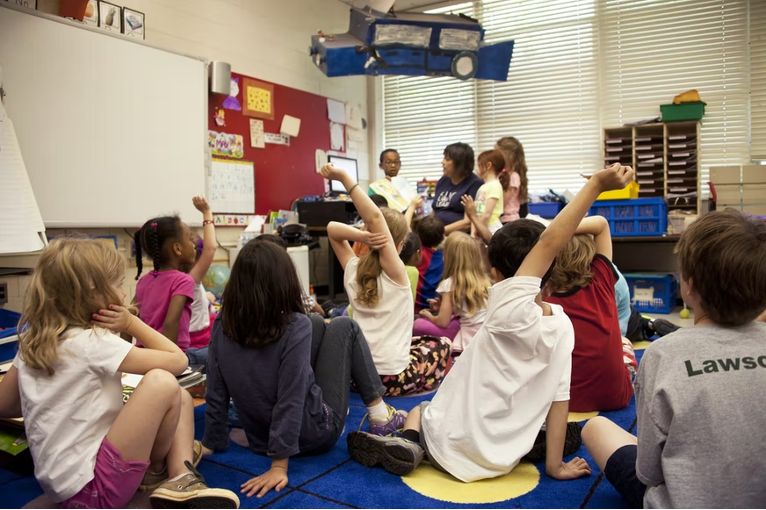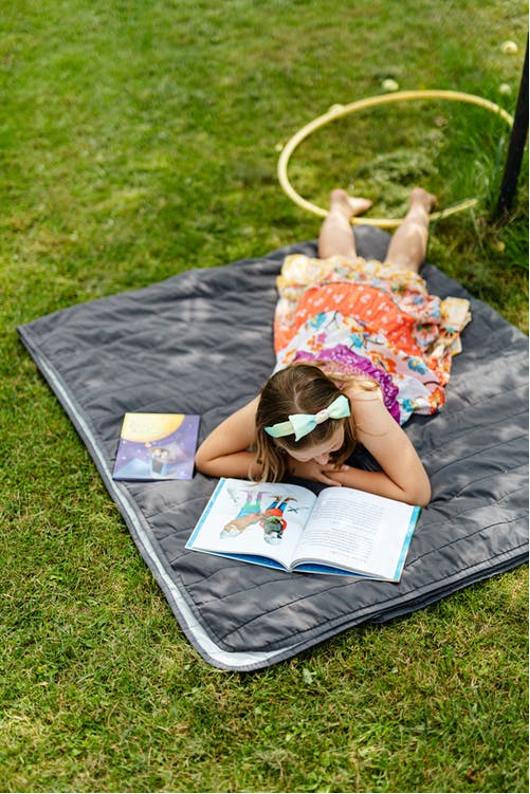Know a Struggling Reader in 1st Grade? 4 Strategies That Just Might Work
1st grade is a time of exploration, play, social development, and, crucially, learning how to read. In anticipation of summertime - and, hopefully, more reading time - we’re outlining common reading goals and strategies to support struggling readers in 1st grade.

1st Grade Reading Goalsfor Struggling Reader
If your 1st grade reader is struggling, it might be time to adjust their reading goals and introduce new strategies to guide them toward success. Throughout the year and into the summer, there are several common reading goals for first graders to work toward:
- Learning common sight words.
Sight words are often defined as words that kids can’t sound out with phonics, such as the, who, one, and you. Other high-frequency words are easier to sound out: think “it,” “run,” “like,” “can,” and others. While memorization of these words should not replace phonemic awareness, increasing first graders’ familiarity with high-frequency, one-syllable words can boost their reading confidence.
- Answering questions about books they’ve read.
After each reading session, adults can facilitate a “mini book club” by asking the child questions about the book, helping them summarize the story, and generally discussing the book, all of which show the child’s understanding of the content.
- Developing a love for reading.
For a first grade struggling reader, nurturing their love for literature may seem like a lofty goal. Yet for parents and teachers, there’s no need to stress: developing a passion for books is a long-term goal! To get a headstart, offer regular and frequent exposure to books and decodable readers that align with the child’s skills and individual interests. Dinosaurs, fairies, big cats, you name it: there’s a book for your first grader.

How to Help My Struggling 1st Grader in Reading
After setting these reading goals, there are numerous strategies to help struggling readers in first grade transform into second grade superstars.
- Set individualized reading goals.
Make a reading goal chart, tracker, or even a paper chain link with one reading goal written on each link. For struggling readers in first grade, being able to visualize and check off their reading goals makes success more tangible and exciting.
- Establish reading time - and make it fun.
Imagine: just 10-15 minutes every day can. Make reading a daily habit by making it fun: read as a family in a quiet and cozy corner of the house, and discuss your books after the timer goes off.
- Visit the library this summer.
School is out, which means the library is IN. Many local libraries sponsor summer reading challenges and events to support students of all abilities, including struggling readers in first grade and other age groups.
- Find creative ways to read.
With the help of an adult, first graders can draw and write their own books - then read them out loud to others as newly “published” authors. Families can watch movies together with subtitles to encourage subconscious reading. And don’t shy away from graphic novels and other nontraditional reads: for a first grader, any reading is good reading.
Even for struggling readers in 1st grade, meeting their reading goals is possible when educators and parents meet them at eye-level. From an adult perspective, this means regularly checking in with your first grader, identifying their reading strengths and weaknesses, and modifying reading activities to reflect their goals and personal interests. No first grader is the same - and that’s what makes their reading journey both challenging and rewarding.

Take-Aways:
- If you’re wondering how to help a struggling reader in 1st grade, it’s important to understand & establish common reading goals for first graders: among them, recognizing high-frequency sight words and showing signs of reading comprehension.
- For 1st graders who are struggling to keep up with their peers, adults can adopt several strategies, including:
- Using visual tools to track reading progress
- Establishing reading time as a family or classroom
- Taking advantage of the local library
- Combining art and reading, using subtitles during movies, and finding other creative ways to sneak reading into your child’s everyday routine
Start Teaching Reading for Free Now!
Access Level 1’s four interactive stories and the accompanying supplemental resources to teach elementary students how to read. No credit card is needed. Join the 42,635 teachers and students using our reading program.
